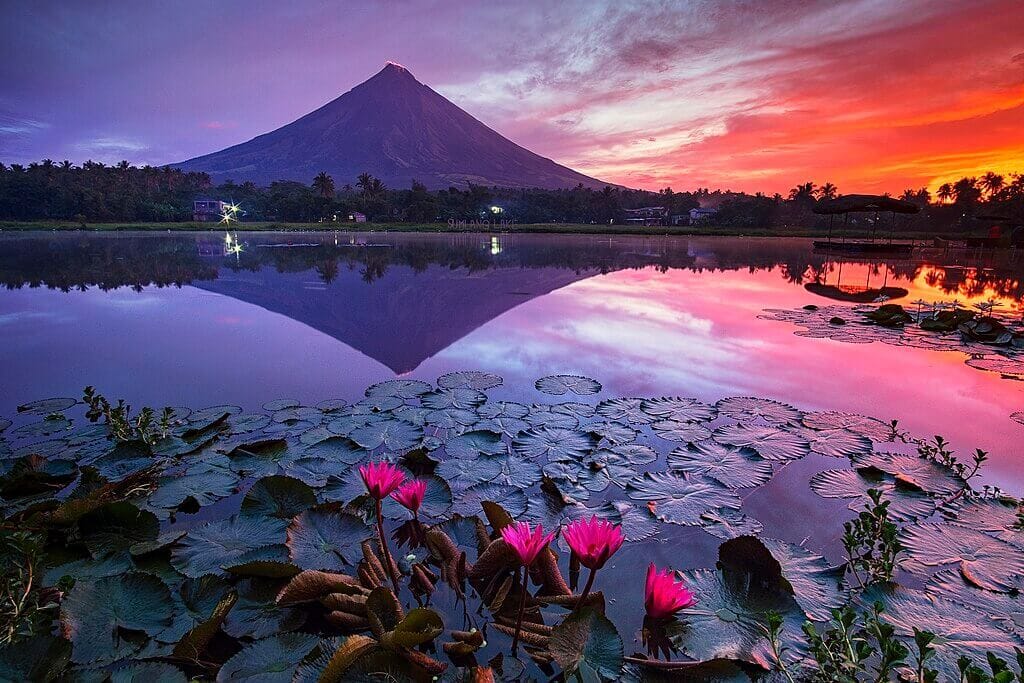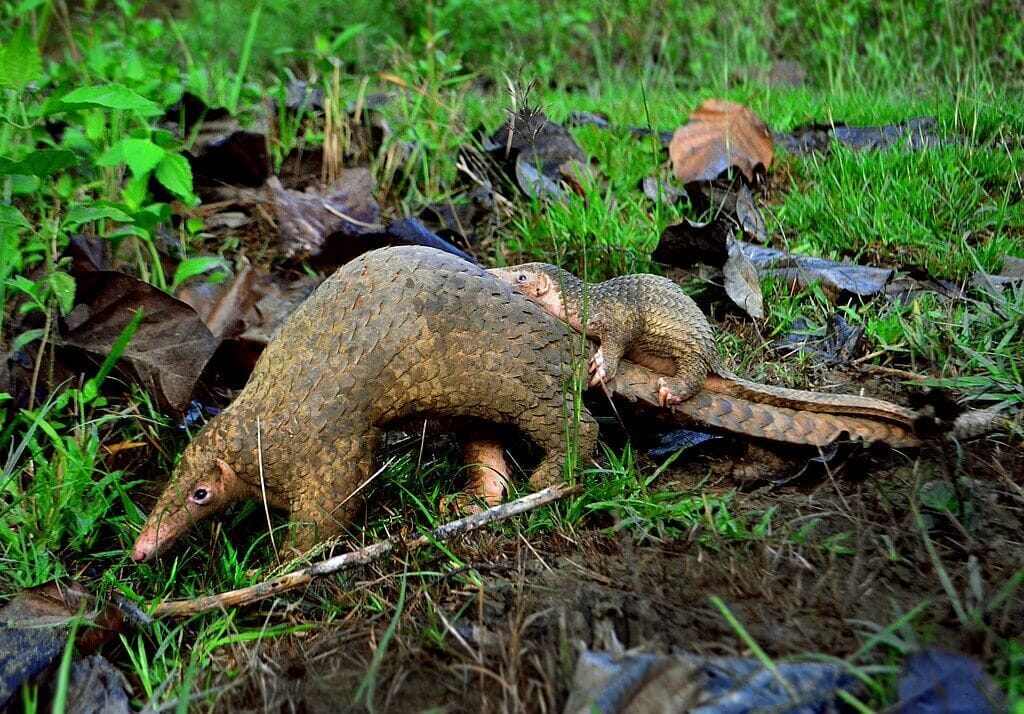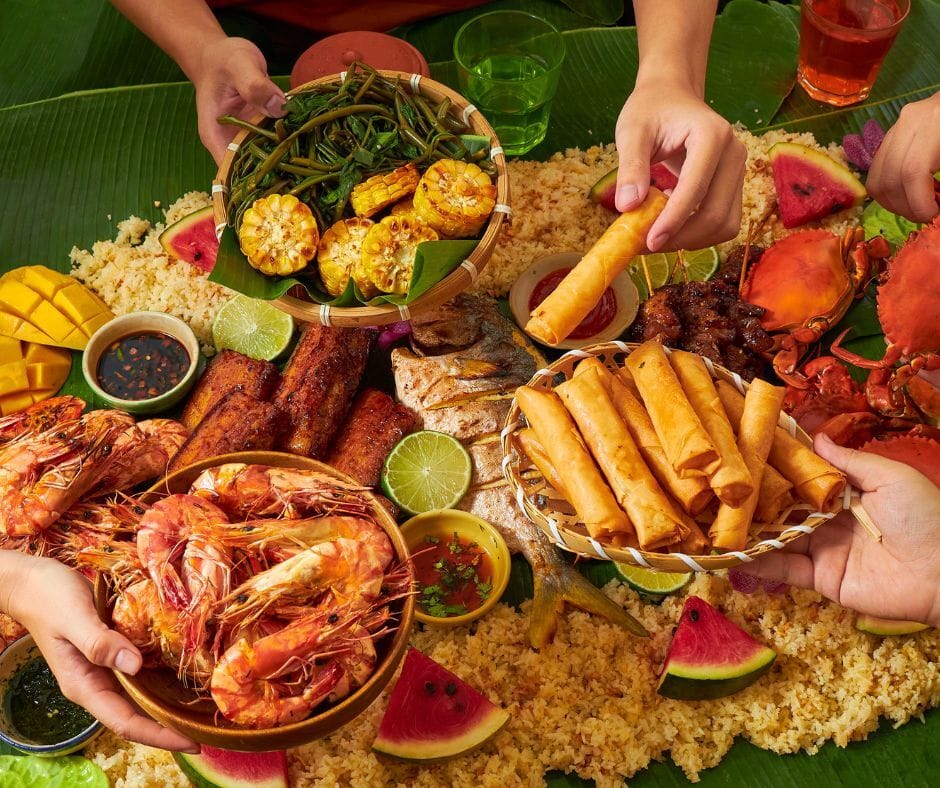- Finding Utopia Newsletter
- Posts
- Sumlang Lake — Lakeside Calm at Mayon’s Feet
Sumlang Lake — Lakeside Calm at Mayon’s Feet
Stories: Sumlang Lake — Lakeside Calm at Mayon’s Feet; The Philippine Pangolin — A Secret Survivor of the Palawan Forests; The Philippines — At the Table of Global Gastronomy

Hello and Mabuhay!
Welcome to Finding Utopia — your trusted guide to exploring the wonders of the Philippines and beyond.
In this edition, we bring you inspiring stories and essential travel insights to fuel your next adventure:
Sumlang Lake — Lakeside Calm at Mayon’s Feet
The Philippine Pangolin — A Secret Survivor of the Palawan Forests
The Philippines — At the Table of Global Gastronomy
Wherever you're dreaming of going next, we're here to guide you closer to your utopia.
Enjoy the read!
— The Finding Utopia Team
Sumlang Lake — Lakeside Calm at Mayon’s Feet

In the soft light of southern Luzon, there exists a lake where stillness meets spectacle. Sumlang Lake sits quietly in the Municipality of Camalig, Albay, offering a front-row seat to the perfect cone of Mayon Volcano. Here, the water mirrors the sky, the breeze carries island-style ease, and the landscape invites pause rather than rush. Our latest blog post explores how this lakeside retreat blends rural rhythm, natural scenery, and thoughtful escape into an unforgettable stop.
A Waterside Stage for Mayon’s Reflection
Sumlang Lake is defined by one grand view: Mayon Volcano rising behind its calm surface. On clear days the nearly symmetrical peak is reflected like a painting, the still water doubling the drama.
The lake itself is rustic-charm incarnate: clear water with slight murk in places, coconut and green trees lining its edges, and bamboo rafts floating gently.
Arriving here feels like stepping into slower time—whether by raft or lakeside pause, the world outside quiets and the view anchors you.
Activities for Tranquil Adventure
Whether you’re seeking motion or stillness, Sumlang Lake offers both.
Hop aboard a bamboo raft and drift across the water, eyes resting on Mayon’s shape and the sky above.
For a little more effort, paddle a canoe or kayak—each stroke brings you deeper into the scenery.
Prefer quiet? Choose a shady lakeside corner, picnic under coconut trees, and let the breeze soothe you.
For photographers and dreamers alike, early morning or late afternoon light offers soft glow and perfect reflections—ideal for capturing Mayon mirrored on the lake’s surface.
Why Sumlang Lake Belongs on Your Route
This is more than a stop-over.
It’s close to Legazpi City yet worlds away from urban noise—making it ideal for families, couples, or solo travellers wanting calm.
The community-supported nature of the lake means your visit contributes directly to local livelihoods—rafter operators, café spots, lakeside vendors.
Combining nature, culture and ease: after the raft ride, you might stroll into an agri-village or café and taste local snacks overlooking the water.
Visiting respectfully means: staying on designated paths, avoiding disturbance of the lake’s edges, supporting local businesses, and arriving with the mindset of calm appreciation rather than a checklist.
Sumlang Lake invites you to slow down and simply be. It asks of you less hurry and more presence. In the shade of palms, on a floating raft, as a silhouette of Mayon rises and reflects—you find space to breathe, reflect, and connect.
30% off Medik8 Starts NOW
Black Friday is here, but these deals won’t last long! Shop Medik8 and save 30% off your must-have products*
*Terms & Conditions Apply
The Philippine Pangolin — A Secret Survivor of the Palawan Forests

Deep in the forests of Palawan, a remarkable creature creeps quietly beneath the canopy: the Philippine pangolin—small, armored, elusive. This species survives in a world where visibility is rare, opportunities for discovery even rarer, and threats all too real. Our latest blog post explores how this pangolin reflects not just ecological mystery but the urgency of guardianship, in an island where wild nature still holds hidden kingdoms.
The pangolin is not built like any typical mammal. Its body is sheathed in tough overlapping scales, its limbs tipped with long claws for digging into ant and termite nests, its habits nocturnal, secretive. Found exclusively in Palawan, the species shows how isolation and specialization go hand in hand.
By night it scrounges for nourishment; by day it curls into a protected ball, blending into fallen leaf and forest floor. It is nature’s built-in stealth mode—and as a visitor you may never see it, but its presence echoes in the root mats, the detritus, the undisturbed soil.
Why It Matters & The Threats It Faces
This pangolin is more than a forest oddity—it’s a barometer of Palawan’s wild-ness and a warning signal for ecological health.
Endemic to Palawan: Its survival is tied entirely to this island’s forests, soils and ecosystem processes.
Heavily trafficked: Despite its hidden nature, it is one of the most hunted mammals in the world, targeted for meat, scales and as a rare collectible.
Fragile ecosystem link: The pangolin depends on intact termite systems, healthy under-growth, undisturbed soil—so it’s both fragile and foundational.
Visiting Palawan’s forests with this knowledge changes the lens: you aren’t just walking beneath trees—you’re walking in a residence of rare life.
Traveller’s Guide: How to Honor Its World
When you explore Palawan’s forests, tread softly, look deeply—and think beyond selfies and trails.
Stick to marked trails. Each side-trip into untouched undergrowth risks disturbing this species’ habitat.
Ask local guides and communities about pangolin awareness. Many indigenous or local residents will know the signs—even if the animal stays unseen.
Say no to souvenirs that might be linked to wildlife trafficking. The pangolin’s plight is part of a bigger network of exploitation.
Support accommodations, tours and projects that contribute to conservation, not just consumption.
The Philippine pangolin may never meet your gaze—but that doesn’t lessen its value. It teaches us that survival can be quiet, that beauty can be hidden, that protection often happens outside the spotlight. When you explore those Palawan forests, remember: you are entering a kingdom of secrets, inhabited by resilience, vulnerability and wonder.
All the stories worth knowing—all in one place.
Business. Tech. Finance. Culture. If it’s worth knowing, it’s in the Brew.
Morning Brew’s free daily newsletter keeps 4+ million readers in the loop with stories that are smart, quick, and actually fun to read. You’ll learn something new every morning — and maybe even flex your brain with one of our crosswords or quizzes while you’re at it.
Get the news that makes you think, laugh, and maybe even brag about how informed you are.
The Philippines — At the Table of Global Gastronomy

In an invitation that blends flavour, culture and ambition, the Philippines has accepted a seat at one of the world’s most significant tables: hosting the 10th UN Tourism World Forum on Gastronomy Tourism in 2026. This moment goes beyond food—it signals how Filipino cuisine, hospitality and heritage are stepping into the spotlight of global tourism.
A Nation’s Flavours Become a Global Stage
When the United Nations World Tourism Organization (UN WTO) selected the Philippines as the host for the 2026 forum, it recognised more than cooking. It acknowledged the archipelago’s culinary future.
Tourism Secretary Christina Frasco framed it this way: the country is “the perfect venue … where the world can gather to share, taste, and celebrate food as a bridge between cultures.”
With over 150 countries expected to participate, the forum will convene chefs, innovators, advocates and leaders around food tourism as a driver of sustainable growth.
Why Gastronomy Tourism Matters for the Philippines
Food & beverage services accounted for 8.04 % of the country’s Tourism Direct Gross Value Added in 2024.
Inbound tourism spending on food and drink represented 17.1 % of total visitor outlay.
The sector employs approximately 6.75 million Filipinos — many in culinary, hospitality and food-service roles.
These figures show that food tourism is not just flavour—it’s economic muscle, cultural identity and community opportunity all rolled into one.
From Kitchen to Culture: What the Forum Means for You
As a travel writer, digital nomad or food-lover exploring the Philippines, this development opens new doors:
Expect more spotlight on authentic Filipino cuisine—regional dishes, indigenous ingredients, heritage cooking methods.
Look out for new food-tourism experiences: farm-to-table tours, gastronomic festivals, insider access to kitchens and traditions.
The local hospitality scene is likely to evolve fast—more chef-led resorts, dining destinations layered with cultural context, and collaborations with global culinary talent.
For those who travel with curiosity and appetite, the Philippines is becoming not just a backdrop but a destination defined by flavour, community and shared experience.
How to Engage & Support the Movement
Seek out local vendors and regional specialities wherever you go in the Philippines—your purchase supports livelihoods and cultural preservation.
Ask your guides or hosts about ingredient stories—where was this grown, how was it prepared, what’s the community behind it?
Choose tours or stays that emphasise sustainable practice —minimise single-use plastics, support small producers, respect food cultures.
Use this moment of global recognition to deepen your understanding of Filipino food—not as novelty but as living culture.
The Philippines’ hosting of the 2026 UN gastronomy forum isn’t just a banner—it’s a doorway. A doorway inviting travellers not only to see the islands, but to taste their heart, know their stories and join the collective table where food is culture, economy and connection all in one.

The daily health habit you’ll actually stick with…
This time of year, it’s SO hard to stay in control of your health.
Holiday travel (and meals!), big family gatherings, dark and cold days, it’s easy to skip that workout, sleep in later than you should, or have just one more cookie.
That’s why you need a daily health habit that’s easy to stick with.
Meet AG1: With just one quick scoop every morning, you’ll get over 75 ingredients that help support your immune health, gut health, energy, and close nutrient gaps in your diet.
Right now is the best time to get started - with every new subscription, they are giving away $126 in free gifts for the holidays.
Give AG1 a try today and take control of your health this holiday season.







Reply